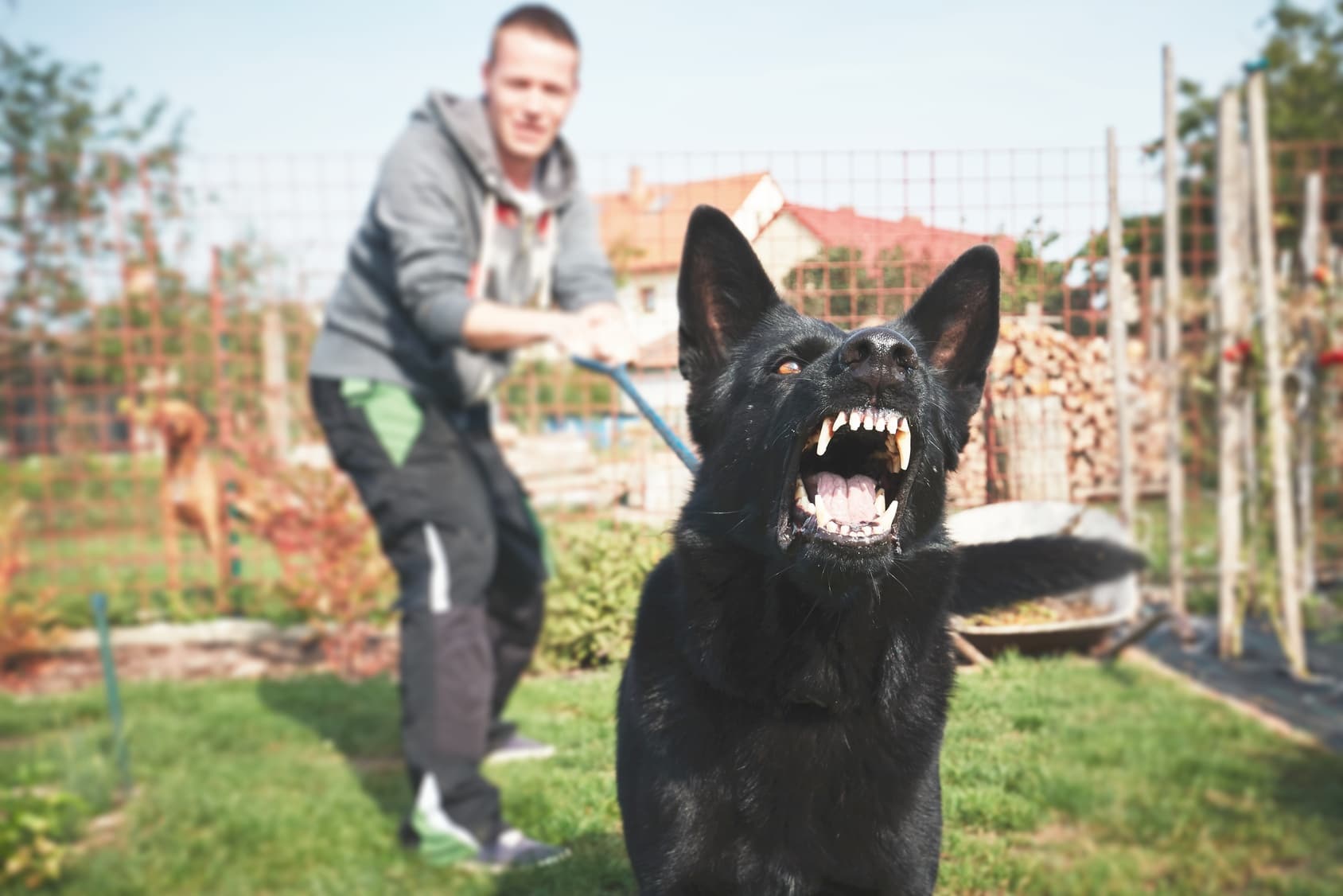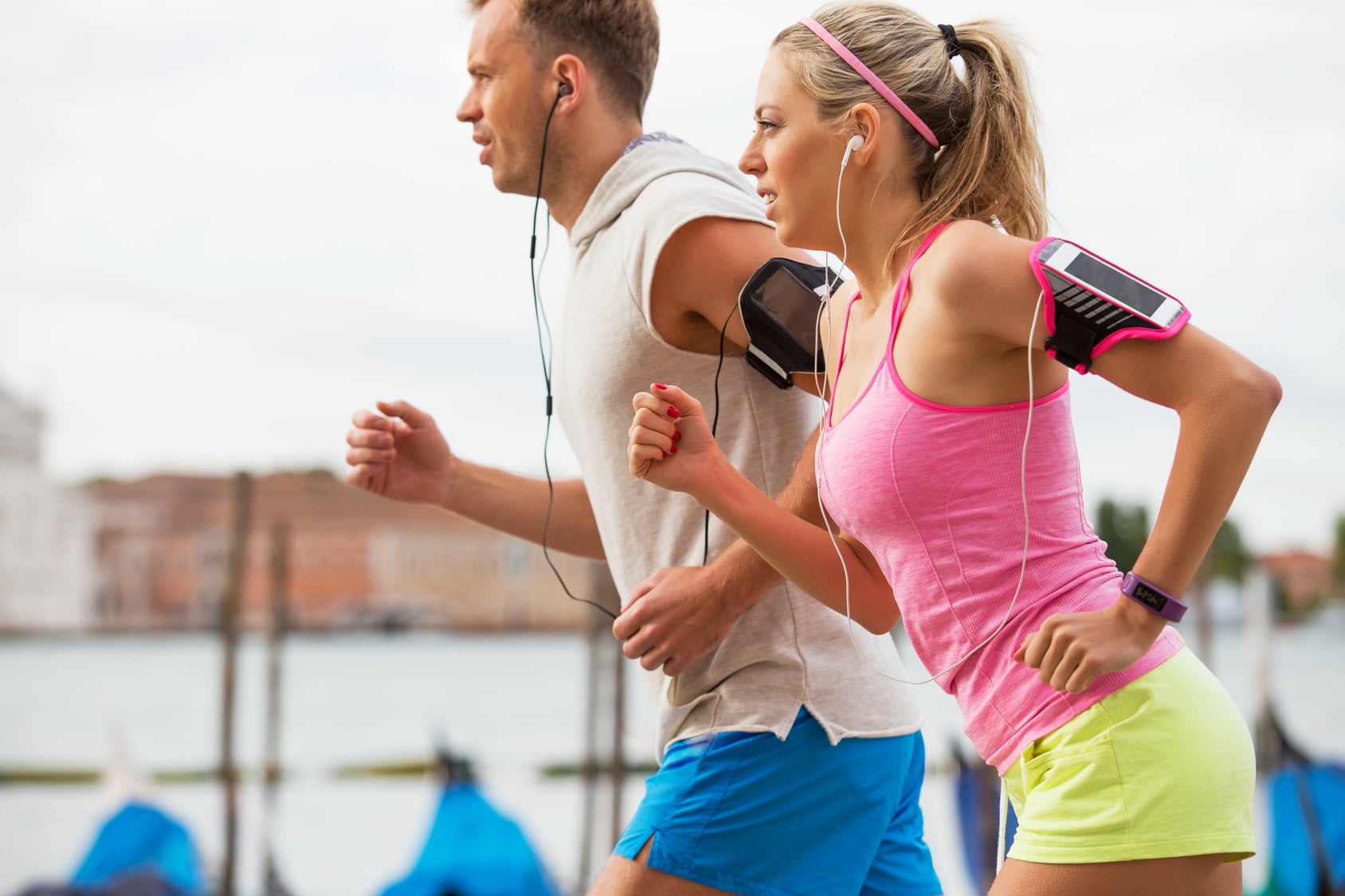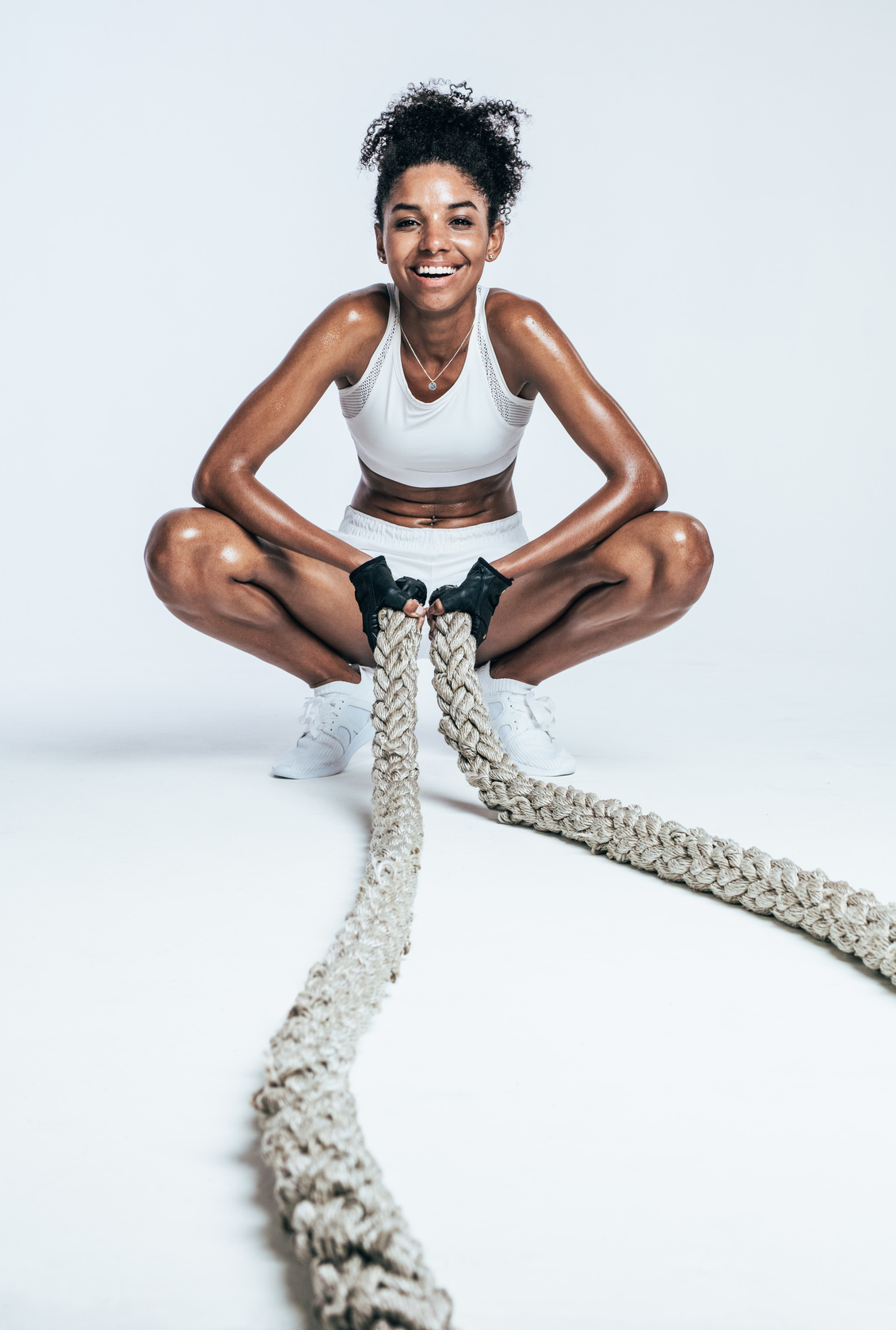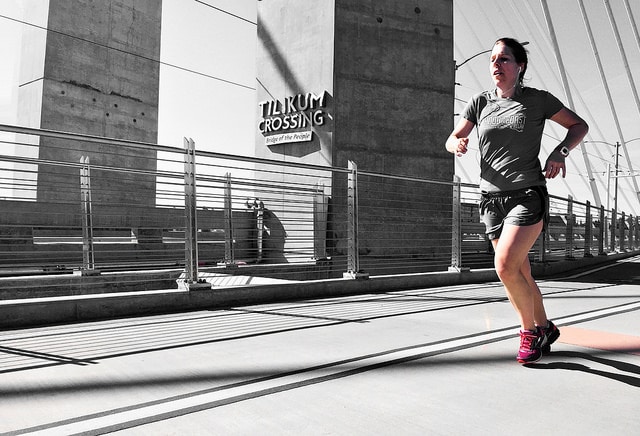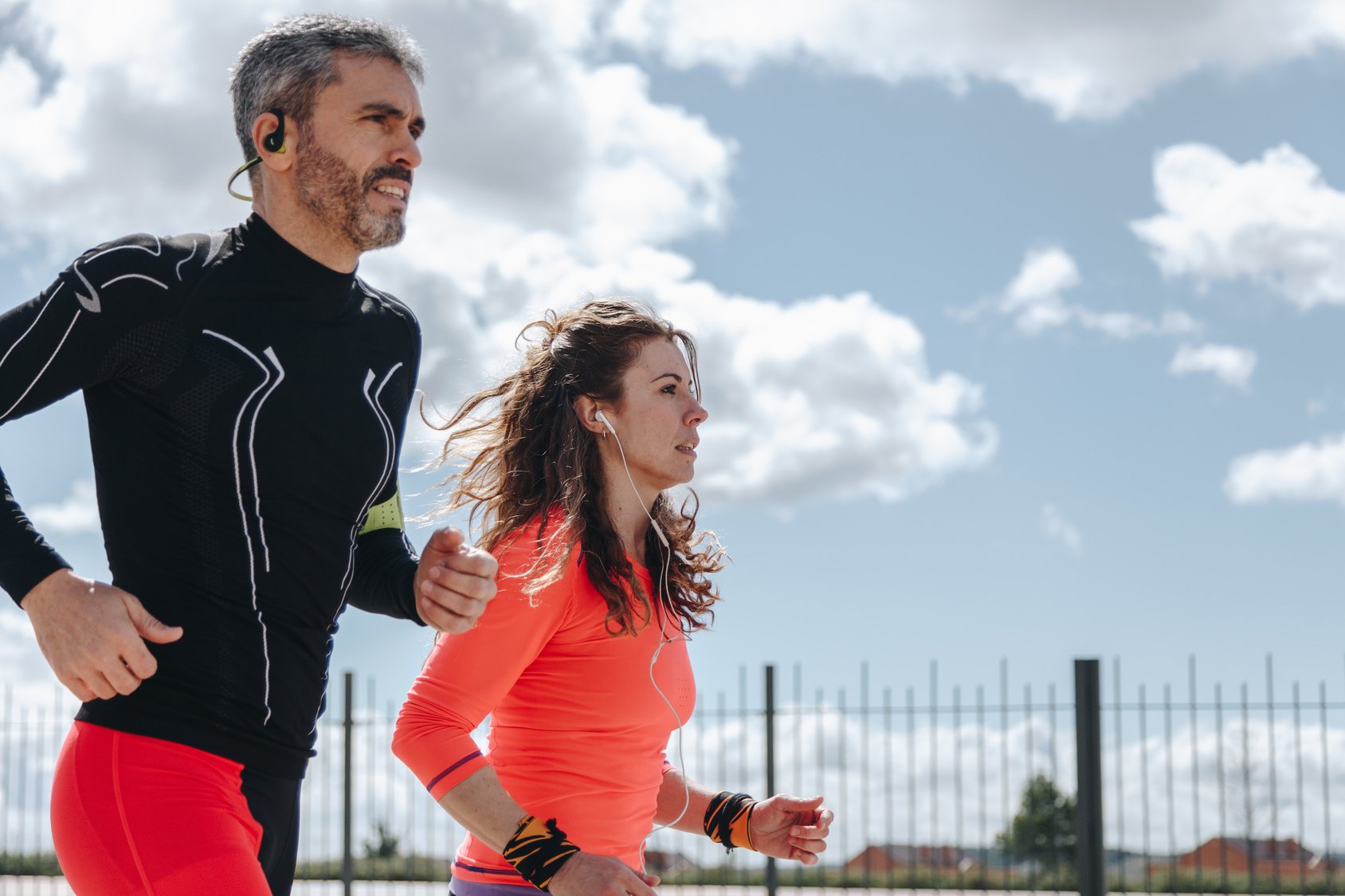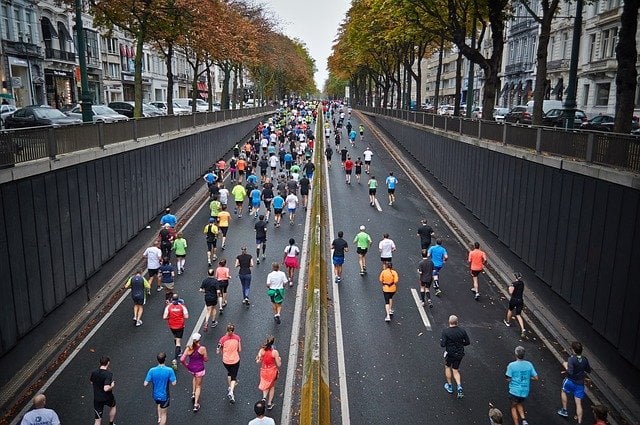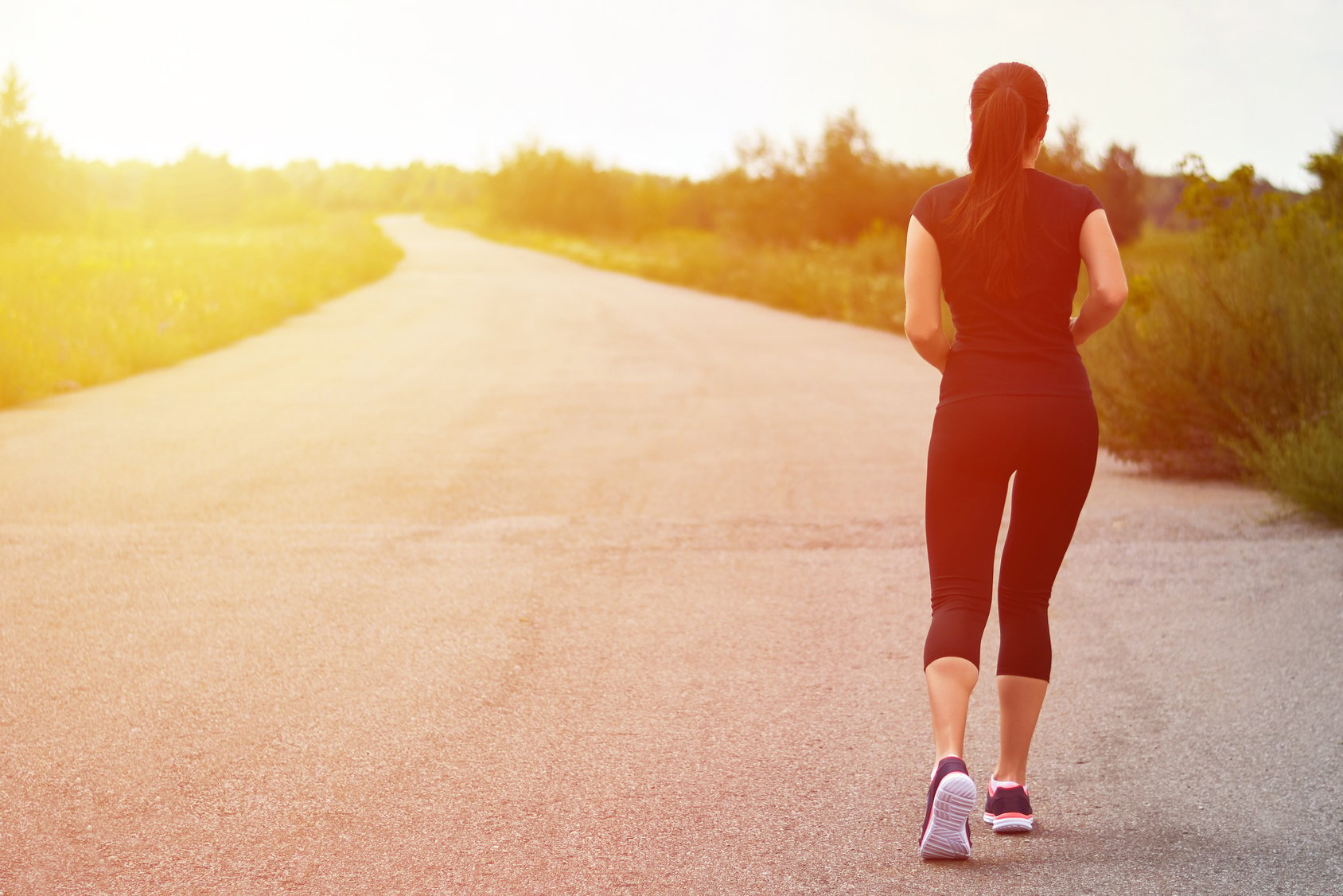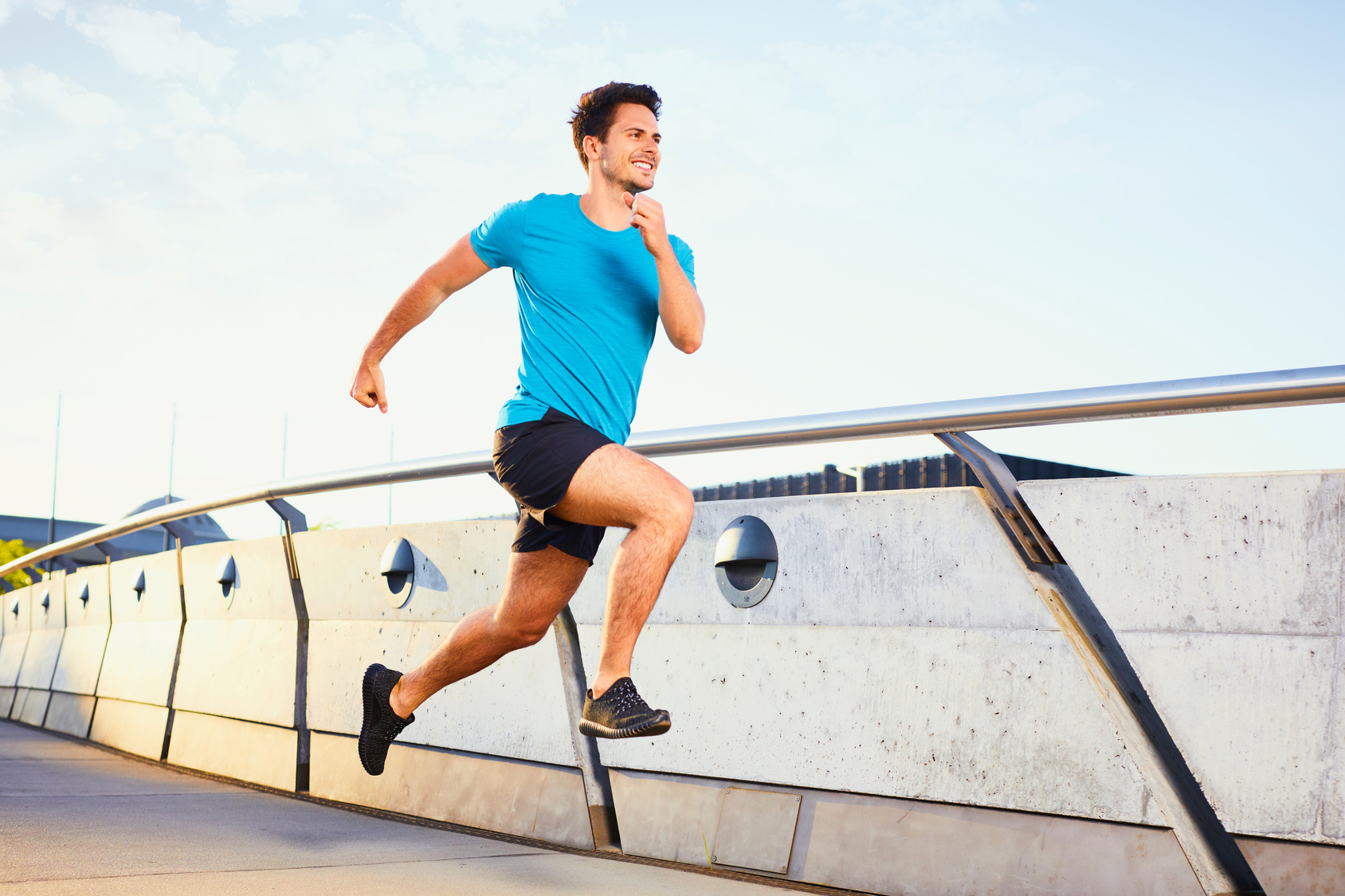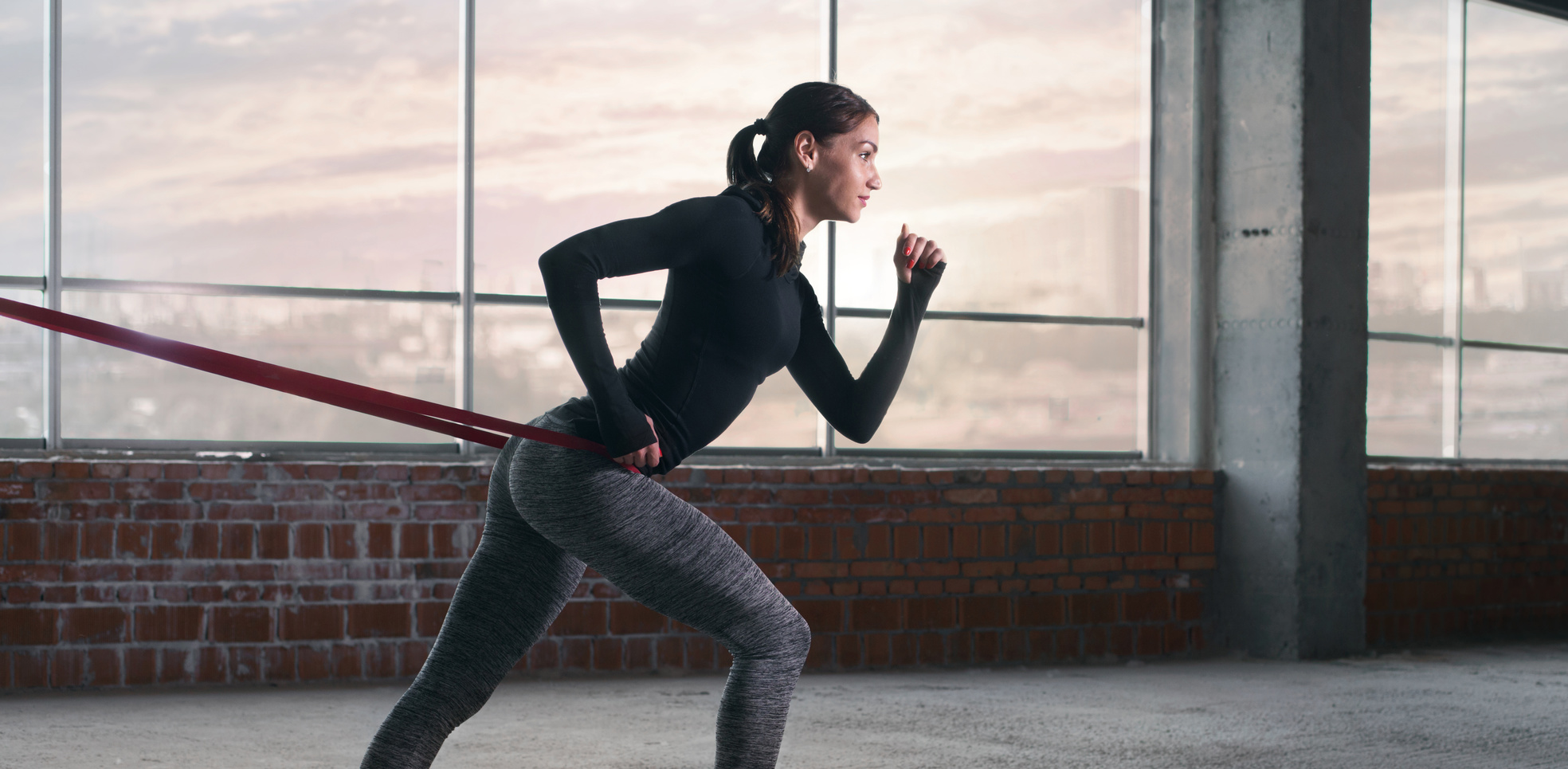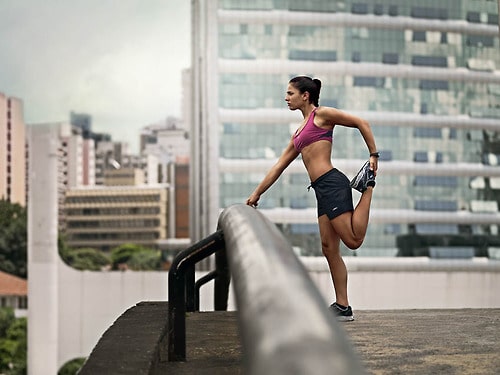Whether you’ve decided to start running to shed some weight, shake off stress, or simply level up your fitness game, there’s something magical about this journey you’re embarking upon. But here’s the catch: this journey, like all great adventures, comes with its fair share of trial and error.
Imagine it’s like trying out a new recipe—you might accidentally add a bit too much salt, but hey, that’s how you learn to create the perfect dish. The road to becoming a runner is a path paved with lessons and yes, a few mistakes. But fear not, because I’m here to be your running confidante and share a treasure trove of wisdom to make your journey smoother and safer.
So, are you ready to lace up your shoes and dive headfirst into the world of running? Are you prepared to embrace the bumps and blunders along the way?
Then let’s go!
Running Gets Easier
Here’s a nugget of wisdom that’s worth its weight in running shoes: running gets easier. Yes, you heard that right. The sport that might have left you breathless, sore, and questioning your life choices is about to transform into something magical.
Let’s be real—running isn’t all rainbows and unicorns. The impact can be a tough nut to crack, leaving your body and mind wondering what they’ve signed up for. From soreness and cramps to blisters and injury scares, it’s like a rollercoaster of challenges.
Enter the hero of this tale: consistent training. Imagine your body as a student in the school of running. At first, it’s like navigating a foreign language; everything feels strange and awkward. But with time and dedication, your body starts to adapt, learn, and transform. Suddenly, what used to be a daunting uphill battle becomes a smooth, enjoyable cruise.
So, here’s the game plan: commit to at least three runs a week. Treat these runs like VIP events on your calendar—just as important as that work meeting or that family gathering you’d never miss. But hold on a sec—before you sprint off into the sunset, remember this golden rule: start small.
See, the key is to avoid going all out from the get-go. Running too much, too soon is like binge-watching an entire series in one sitting—enthralling at first, but then you’re left burnt out and craving a break. Instead, begin with a realistic distance, say around two miles. Think of it as the foundation of your running journey.
And here’s where the magic of progression comes in. Once you’ve conquered that two-mile mark without feeling like you’re gasping for air, it’s time to level up. Slowly and steadily increase your mileage. It’s like upgrading your running passport to explore new territories, one step at a time.
You Cannot Outrun a Bad Diet
The human body is like a finely tuned machine, and just like any machine, it needs the right kind of fuel to perform at its best. Whether you’re aiming to shed a few pounds or break your personal best, your diet holds the key to unlocking those goals.
Let’s bust a myth right here: there’s no amount of running that can outshine a bad diet. You can sprint, jog, or leap over hurdles, but if your diet is lacking, you’re just running in circles. Think of your diet as the foundation upon which your running castle is built. You wouldn’t build a castle on quicksand, would you? So, why build your running journey on a shaky diet?
So, what’s the magic formula? It’s simple: proper fuel equals peak performance. Complex carbohydrates, lean protein, and healthy fats are your knights in shining armor. These are the nutrients that power your body, giving you the energy you need to conquer the road ahead.
Imagine your plate as a canvas waiting to be painted with vibrant colors. Load up on vegetables, greens, whole grains, lean poultry, and fish. Don’t forget the fruits—they’re like the sweet notes in your symphony of nourishment. And speaking of healthy fats, let olive oil and avocados be your trusty companions on this journey.
Now, here’s the challenge: bid farewell to the court jester of your diet—junk food. It’s time to give that sugary, salty tempter the boot. Junk food might promise quick pleasure, but it’s like fool’s gold for your body. Instead of nourishing you, it leaves you feeling sluggish, unsatisfied, and ultimately, far from your goals.
Here’s how to run for abs.
The Right Gear Matters (and it’s not just the shoes)
Running might be free, but it’s definitely not cheap—especially if you’re aiming to unlock your full potential.
Here’s the truth. Running gear isn’t just a collection of clothes and gadgets; it’s your trusty sidekick on your journey to becoming a consistent, confident runner. Think of it as your secret weapon, ensuring every step is a comfortable, joyful one.
So, here’s the deal: investing in proper running gear is like laying the foundation for your running kingdom. It’s a gift to your present self and a promise to your future self that you’re all in on this journey.
Now, let me share a little secret from the archives of running history. When I first started running, I was decked out in whatever sports shoes I had lying around, random tennis shorts, and those comfy-looking cotton socks. Cotton T-shirts were my uniform, and I wondered why my runs felt like a painful battle with blisters and aches. Can you guess the problem? Yep, I was rocking the wrong gear, my friend.
So, here’s the playbook for success: make a pit stop at your local running store. Those experts? They’re your running guardian angels. They’ll analyze your feet and running style to guide you to the perfect pair of running shoes. It’s like finding the glass slipper that fits only you.
And let’s not forget about Mother Nature’s mood swings. From the sunny days that coax you outdoors to the rain-soaked runs that test your resolve, having the right gear for every weather condition is like having an all-weather cloak of awesomeness. Imagine clothes that wick moisture away, keeping your skin dry and comfortable—no chafing, no blisters, just pure running joy.
But here’s the fun part: the world of running gear isn’t just about shoes and clothes. There’s a treasure trove of accessories waiting for you.
Water bottle belts for hydration on the go, a GPS watch to track your progress like a champion, mid-run fuel to power your journey, and even running books that’ll inspire your soul.
Oh, and let’s not forget about those extra pairs of shoes—they’re like a runner’s version of Cinderella’s glass slippers.
But wait, there’s more! You don’t need to break the bank for this treasure trove. Hunt for the best deals online, and when your favorite gear goes on sale, don’t hold back—stock up like you’re preparing for a running apocalypse.
There Are Apps for Everything
Gather ’round, fellow runners, because it’s time to take a trip down memory lane. Remember the days when we used to hop on our bikes and pedal our running routes to figure out the mileage? Ah, the good old times. But hold onto your sneakers, because the game has changed, and boy, has it changed for the better.
Enter the heroes of modern running: running apps and GPS technology. It’s like a match made in runner’s heaven. Gone are the days of cycling to measure your route; now, all you need is a trusty app and your determination to conquer the road ahead.
Let’s talk about the beautiful romance between running and running apps. It’s a love story of epic proportions, especially for those of us who are all-in on this running adventure. Thanks to the wonders of technology, a world of tracking, analyzing, and celebrating your runs is at your fingertips.
The best part? There’s a smorgasbord of running apps out there, just waiting for you to take your pick. From tracking your speed and distance to keeping tabs on elevation gain, training pace, and even the calories you’ve burned—these apps are like your personal cheerleaders, celebrating your every stride.
But wait, there’s more! These apps aren’t just about numbers; they’re about making your runs an adventure. Imagine mapping your routes with precision, knowing exactly where you’ve conquered and where you’re headed next. And for those who crave a mental challenge as much as a physical one, these apps come equipped with fun games to keep your mind engaged while you conquer the pavement.
Now, let’s talk variety. It’s a cornucopia of apps out there, tailored to every runner’s dreams. Whether you’re just dipping your toes into the running waters or you’re a seasoned marathon maestro, there’s an app waiting for you. It’s like a buffet of running goodness, and you’re the guest of honor.
Running is a Mental Game
Your mind is the unsung hero of your running journey. Sure, your legs might be doing the heavy lifting, but it’s your mind that sets the pace, pushes through the walls, and carries you to victory. So, buckle up, because we’re about to tap into the true source of running magic.
Here’s a bold statement: running is like 90% mental and 10% physical. You heard me right. Your mind is the secret ingredient that can make or break your performance. It’s the key to unlocking your full potential. But here’s the catch: your mental state and your physical performance are like two dance partners—they influence each other in ways you can’t even imagine.
So, let’s break down this mental training journey with a simple equation: Thinking leads to Feeling, which ultimately leads to Performing.
It’s like a symphony of thoughts, emotions, and actions playing together in perfect harmony. And the best part? You’re the conductor of this symphony.
Imagine this scenario: you’re out on the road, and a wave of self-doubt crashes over you. But wait, you’ve got a secret weapon—mental training. By acknowledging your thoughts and feelings, you’re taking control, steering the ship away from rough waters. You’re not a victim of your mental state; you’re the commander of your ship.
Now, let’s dive into the toolbox of mental training techniques, and right at the top is visualization. It’s like painting your dreams with the brush of your mind. Take a moment each day to slip into a relaxed, meditative state. Then, start crafting a vivid mental movie of your running goals. Picture every detail—the sights, the sounds, the sensations. Rehearse these scenes over and over, like a movie director fine-tuning each scene.
But here’s the secret sauce: believe in yourself. Know that you’re capable of running that extra mile, pushing through discomfort, and conquering challenges. Remember, discomfort is just a temporary guest, and it’ll pack its bags and leave once your mental and physical endurance grow strong.
Breathing Matters
The rhythm of your breath is the heartbeat of your run. It’s the symphony that powers each stride, each beat of your feet on the pavement.
Now, brace yourself, because what I’m about to share is like the holy grail of running wisdom. Improving your breathing technique is like adding rocket fuel to your running performance. It’s the difference between feeling like you’re fighting for air and feeling like you’re gliding on clouds.
So, here’s the million-dollar question: how should you breathe while running? The answer is simple yet transformative: say goodbye to chest breathing, and say hello to the superstar technique—diaphragmatic breathing, or as I like to call it, “belly breathing.”
Imagine this: when you’re a beginner, your breathing tends to center around your chest. But hold onto your running shoes, because that’s like using a bicycle in a Formula 1 race—it’s just not efficient. Chest breathing is like a shortcut to underperformance.
Now, here’s where the magic happens: enter diaphragmatic breathing, the Jedi mind trick that’ll elevate your running game. Instead of your chest doing all the work, let your belly take the lead. Inhale and exhale using the full power of your diaphragm—the muscle that lies beneath your belly.
The trick? Focus on drawing your breath deep, oh-so-deep, from your abdomen. Think of your belly as the conductor, orchestrating the flow of oxygen to your muscles and body. The deeper you breathe, the more oxygen you’re sending to fuel your running machine.
You can Run With Others
Ah, the solitary symphony of running—it’s like the introvert’s paradise. I, too, was a lone wolf on the pavement, steering clear of group runs like a pro. But guess what? I’m here to spill the beans on the joys of running in the company of others. So, fellow introverts, listen up!
Hold onto your sneakers, because this is where the real adventure begins. Running with a partner or a group is like stepping into a whole new world—a world filled with fun, camaraderie, and a heap of benefits you won’t want to miss.
Think of it as your secret weapon to break free from the comfort zone. It’s like having a personal cheer squad, urging you to go the extra mile (literally). Plus, running with others is like a masterclass in refining your running skills. You’ll learn, you’ll grow, and you’ll surprise yourself.
But here’s the best part: accountability. When you’re part of a running duo or a merry band of pavement conquerors, you’re held accountable for showing up. It’s like having a built-in motivation system that won’t let you off the hook.
So, here’s the game plan: pencil in at least one run per week—one of those sweat-inducing, leg-burning workouts that make you feel alive. And guess what? Tag along a partner or rally up your running buddies.
Cross Training is Awesome
Let’s face it, my friend, running all year round can lead to a one-way ticket to Boredom Town, Burnout City, and even Injuryville. But fear not, because cross-training is here to be your superhero sidekick.
Imagine this: cross-training isn’t just a fancy term; it’s a game-changer. It’s like unlocking a treasure chest of benefits that will reshape your running journey. Why, you ask? Well, for starters, it’s like giving your non-running muscles a VIP pass to the action.
Think about it: those pesky muscle imbalances that often sneak up on us and lead to overuse injuries? Cross-training is the secret weapon to tackle them head-on. It’s like an architect redesigning your body’s blueprint for resilience.
But wait, there’s more! Cross-training isn’t just about fixing imbalances; it’s about boosting your power, speed, mobility, stability, balance, and proprioception—those fancy terms that make you an all-around athletic superstar.
Feeling stuck in a running rut? Cross-training is your knight in shining armor. It’s like injecting a dose of variety into your training program, banishing boredom to the farthest corners of the Earth. Who knew that doing something other than running could be so darn exhilarating?
There is no Such Thing as a Bad Weather
Spring may sprinkle us with its perfect running conditions, but what about those chilly winters or scorching summers? Fear not, my fellow pavement conqueror, because I’m about to unveil the truth about running in any weather.
Running in the cold or heat isn’t a death sentence—it’s a chance to feel invincible. But here’s the secret sauce: gear up like a running superhero. The right gear is your shield against Mother Nature’s mood swings.
Think about it: when it’s frosty outside, layer up with moisture-wicking fabrics that keep you warm and dry, while still letting you conquer the miles. And in the fiery embrace of summer, opt for lightweight, breathable gear that feels like a second skin.
But here’s the kicker: while weather can be unpredictable, your preparation doesn’t have to be. Keep an eye on your body, dress right, and embrace the elements. And if the weather’s still not playing nice, guess what? Your trusty treadmill is always there, ready to save the day.
Running Sucks Sometimes
Motivation is like a fleeting mistress, here one moment and gone the next. It’s a ride of highs and lows, twists and turns, and that’s perfectly okay. Even the most disciplined and devoted runners have days when motivation seems to be on vacation.
Hold onto your running shoes, because I’m about to spill the beans. Just as life serves us those not-so-great days, running has its share of off-days too. It’s like a secret pact between you and the pavement—a reminder that perfection is not the goal.
Picture this: whether you’re a weekend warrior or an elite racer, those bad runs are like the universe’s way of testing your resilience. Some days, you’ll glide through your workout, while on others, those first few steps feel like an uphill battle.
But here’s the twist: those days when you’re struggling are not a sign of failure; they’re a testament to your commitment. Life throws curveballs, my friend, from lack of sleep to stress to that extra slice of pizza you shouldn’t have indulged in.
Why do some runs feel like a rollercoaster? Blame it on a million factors: the lack of sleep, the training overload, the nagging injury, or the stress that’s taken a front-row seat. But remember this: even when the run feels like a struggle, you’re still one step closer to your goals.
And here’s the secret sauce: trust the process. Have faith in the journey you’re on. Keep those shoes laced up and hit the pavement, even on days when motivation seems elusive. Because deep down, you know that consistency, not perfection, is the magic formula.




